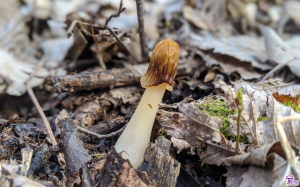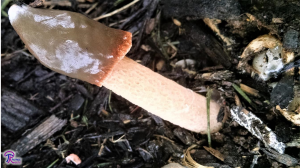#125: Hypholoma sublateritium, the Brick Cap
“Is this mushroom edible?” What a difficult question to answer. The world of edible mushrooms is littered with lookalikes, various degrees of edibility, mushrooms that are edible only under certain conditions, and mushrooms that no one has assessed for edibility. For Hypholoma sublateritium, the question is even more complicated. There is no consensus on whether or not Brick Caps are edible. North American field guides are divided on the issue and European field guides usually list these mushrooms as inedible or poisonous. In my local mushroom club, they are considered edible and are a welcome find in the late fall, when it is usually slim pickings for mushrooms. Because of this ambiguity, community is an essential part of mushroom hunting (despite its culture of secrecy and competition). If you are serious about mushroom hunting, you should be involved with a local mushroom club to ensure that you learn information about...







![#011: Characteristics of Kingdom Fungi [Archived]](https://www.fungusfactfriday.com/wp-content/themes/hueman/assets/front/img/thumb-small-empty.png)


